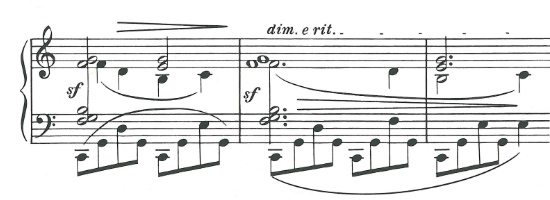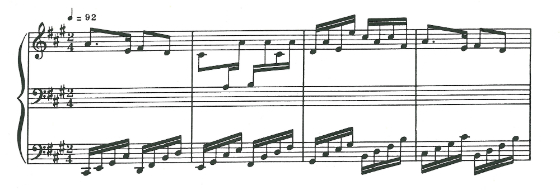Piano music may reference or be contextualized by music made on other instruments, or sung. Some piano music mimics other instruments. The mimicry might be subtle, or subliminal.
In Brahms’s Intermezzo, Opus 118, No. 1 — revered by Milton Babbitt — there’s an extraordinary cadence:

Brahms: Intermezzo, Opus 118, Number 1
In my ear/mind, the low open strings (C and G) of the cello are sounding.
Musical norms or expectations encoded in the construction of instruments come into play. The sound of string crossings corresponds, in some way, to the crossing of human vocal registers. The gradual homogenization of register which allowed an instrumental musical line to (seamlessly?) pass through long registral distance is a modernism.

Beethoven: “Appasionata,” Opus 57 (I)
In Igor Stravinsky’s Serenade in A — just the choice of key is suggestive — at times, I’m strongly reminded of the physical realities of the violin (here, bariolage including an open A string).

Stravinsky: Serenade in A (III)
Is there any chance of anything else (of not suggesting an open A string) — for a musical line that constantly returns to, and surrounds that particular A, in our world, our sound-world that yet contains violins?

Hi Bruce,
I just wanted to say that I’ve followed Piano Morphosis a bit silently or “on the sideline” so to speak for quite some time now. And I love it. You have inspired me to create my own music/piano based website and just sort of pour my honest heart and feelings into it, so I just really wanted to tell say thank you for the inspiration.
Also, I love Milton Babbitt. I was actually watching a YouTube clip of Babbitt discussing electronic music earlier today. Granted, it’s from 1997, but it’s still a wonderful and educational ten minutes. What an incredible composer.
Ronnie
Bruce,
This is the kinda piano stuff I totally geek out about. Have you done anything on 12 tone? I’ll have to check out the rest of your blog entries 🙂 Thanks!